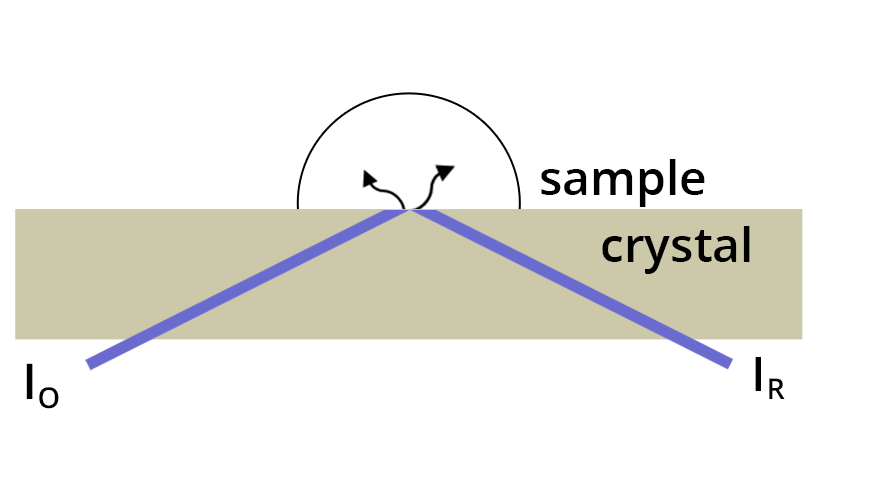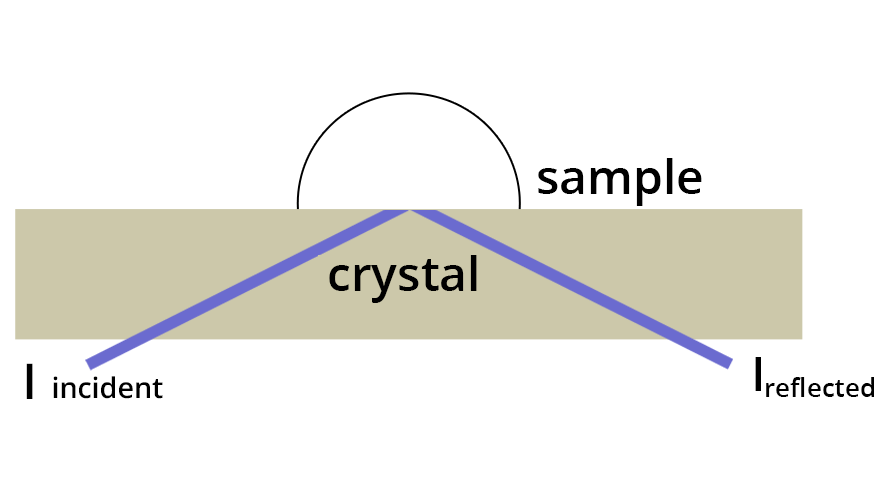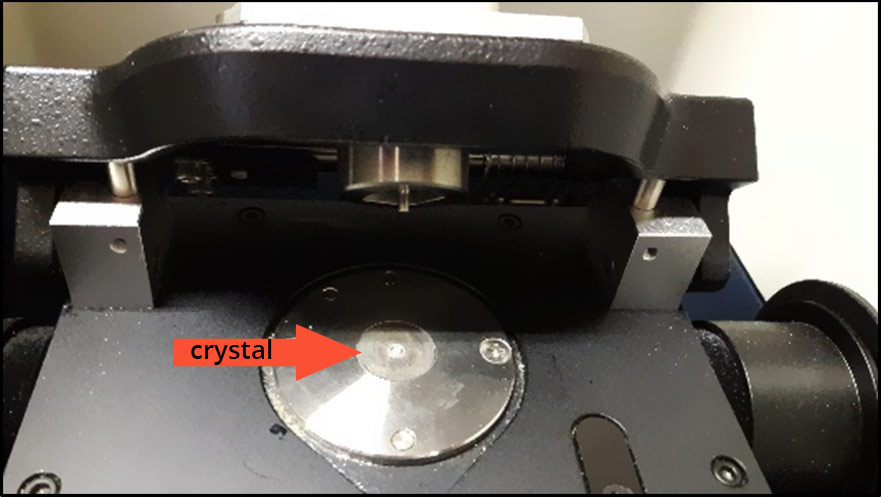Attenuated total reflectance (ATR)
ATR is based on the laws of geometric optics (Descartes’ laws).
A wave passing through a medium undergoes different effects when it meets another medium. It depends on both the refractive index of the media and the angle of incidence. It can continue its path through the second medium after having undergone a deviation (case 1), or a fraction may continue through the second medium while another fraction is reflected (case 2), or the whole wave is reflected at the surface of the new medium without loss of energy (case 3).

It is the latter property that is used in ATR. The light beam coming from the source passes through a crystal on which the sample is deposited. Instead of passing through the sample, the beam is reflected at its surface and goes back towards the detector.
This reflection is actually not complete since at the interface of both media (the crystal and the sample), a progressive wave called “evanescence” is generated. This wave enters the sample and is then absorbed. Hence the name attenuated total reflectance.
⇒ Attenuated total reflectance

The crystal, often made of diamond, is very resistant and is therefore well suited for any kind of sample, whether it is aqueous, acid, basic, or corrosive… However, a spectrum can only be obtained if there is very good contact between the sample and the crystal, which means that powders need to be crushed with a pressed.
The penetration depth of the evanescent wave in the sample depends on its refractive index and on the angle of incidence of the light beam. Since it is fixed for each type of sample, the ATR module allows quantitative studies to be carried out.









